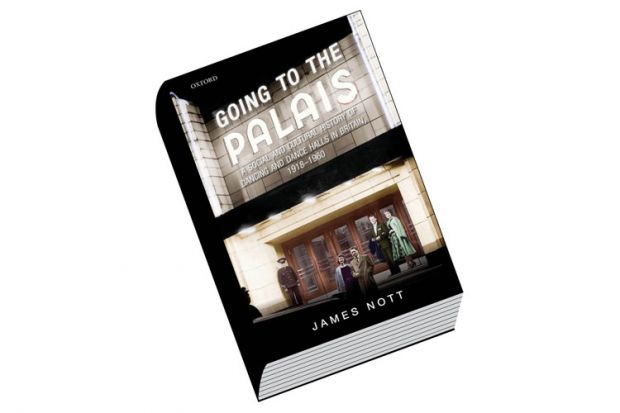Dance halls can be read as a key barometer of social and cultural change in the UK in the 20th century. In the early 1920s, “palais de danse”, or commercial dance halls, suddenly appeared across whole swathes of urban Britain. In the great industrial cities of provincial England and Scotland, from Birmingham to Glasgow, and in London, York and Edinburgh, giant ballrooms that could host up to 2,000 people a night were erected. By the 1930s, some 3 million people a week were visiting the dance halls.
In attempting to explain what these venues represented in British cultural life, James Nott considers several possibilities: Americanisation, the harbinger of female emancipation, a revolution in physical and emotional intimacy, and the crucible of youth culture. However, his meticulously researched monograph is much stronger on British dance halls’ milieu than on their role in cultural and social change.
As Nott notes, in a typical evening at the Palais, each patron would dance about 40 times, with about 30 different partners. There was thus much sociability but very little intimacy. Indeed, male dance partners had to keep giving way to rivals. If a new male appeared and tapped your female partner on the shoulder, you were obliged to leave the floor or risk being ejected from the hall. There was a veneer of politeness and social decorum, and strict rules enforced by the MCs. But there was also predatory male behaviour, humiliating rejections inflicted by women on gauche men, and fights – sometimes, as in 1940s Glasgow, with knives – and there were several deaths at dance halls over this period.
Nott unquestionably brings new material to the subject, but his self-aggrandising claim that he has “pioneered examination of dance halls” is erroneous. Melanie Tebbutt’s Being Boys: Youth, Leisure and Identity in the Inter-War Years (2014) has more insightful things to say about dance halls in relation to youthful masculinity. Moreover, whereas Tebbutt had a jewel of a source – her father’s teenage diary – Nott relies on the standard sources, principally Mass Observation, specialist music papers and the press (embellished by a small number of oral history interviews). But Mass Observation came into existence only in 1937, and its army of “unobserved observers” provide few illuminating insights into the dynamics of the dance hall.
The author’s thesis is that dance halls were institutions that promoted social conformity and a degree of social mixing. But they also generated social deviance and cultural resistance. The teddy boy cult flourished in dance halls, and in the 1960s the Mods took over former dance halls, such as London’s Tottenham Royal. By the 1970s, the Mecca Ballrooms, certainly in provincial cities such as York, were still in existence and offering a quaint alternative to the ubiquitous discotheques.
Overall, Nott overeggs the notion of the Palais as a quintessentially English milieu; an image reinforced by the Kinks’ 1982 hit Come Dancing, in which an East End cockney reminisces about “the Pally” of his youth. In reality, however, throughout their history dance halls attracted all sorts of people who were outside the British class system – Indian and Chinese students, Oriental dancers (the subject of the British film Piccadilly shown in UK cinemas in 1929), Jews, West Indians and the American GIs of the wartime “friendly invasion”.
David Fowler is a life member of Clare Hall, Cambridge, and honorary visiting fellow in history, University of York, and author of Beatlemania to Student Power: Sixties Students Reshape Their World (2016).
Going to the Palais: A Social and Cultural History of Dancing and Dance Halls in Britain, 1918-1960
By James Nott
Oxford University Press, 352pp, £65.00
ISBN 9780199605194
Published 3 September 2015
Register to continue
Why register?
- Registration is free and only takes a moment
- Once registered, you can read 3 articles a month
- Sign up for our newsletter
Subscribe
Or subscribe for unlimited access to:
- Unlimited access to news, views, insights & reviews
- Digital editions
- Digital access to THE’s university and college rankings analysis
Already registered or a current subscriber?




